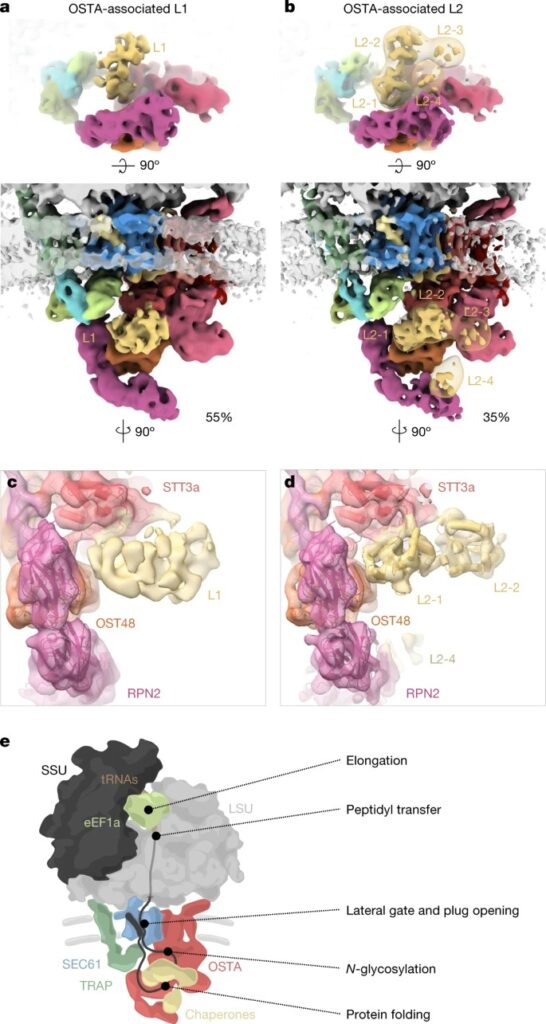ER membrane에서의 translation and protein biogenesis 시각화

Abstract
endoplasmic reticulum (ER) membrane에 존재하는 dynamic ribosome–translocon complex는 human proteome의 주요 부분을 생성한다. nascent protein의 synthesis, translocation, membrane insertion, N-glycosylation, folding and disulfide-bond formation을 제어한다. 이 기계의 individual component는 격리된 상태에서 고해상도로 연구되었지만, native membrane에서의 상호 작용에 대한 통찰력은 여전히 제한적이다.
여기서 우리는 cryo-electron tomography, extensive classification and molecular modelling을 사용하여 molecular resolution으로 ER membrane에서 mRNA translation and protein maturation의 스냅샷을 캡처합니다. 우리는 extended conformation에서 eukaryotic elongation factor 1a (eEF1a)를 가진 매우 abundant classical pre-translocation intermediate를 식별하여, eEF1a가 proofreading 중에 GTP hydrolysis 후에도 리보솜과 관련된 상태로 남아있을 수 있음을 시사한다. ER membrane에서, 구별되는 polysome은 signal peptide 또는 translocon-associated protein complex (TRAP)가 존재하는 multipass transmembrane protein과의 합성에 특화된 상이한 ER translocons에 결합한다. protein-conducting channel SEC61, TRAP 및 oligosaccharyltransferase complex A (OSTA)로 구성된 가장 풍부한 ER translocon variant의 거의 완전한 atomic model은 TRAP의 다른 translocon component와의 특정 상호 작용을 보여준다. 우리는 protein isomerase를 포함할 가능성이 높은 OSTA와 관련된 stoichiometric 및 sub-stoichiometric cofactor를 관찰한다.
요약하면, 우리는 ER-bound polysome과 그들의 조정된 downstream machinery를 시각화한다.
